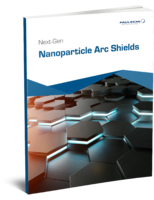Cost Modeling Software Helps Companies Determine ROI for Switching to Structural Adhesives
(CARY, NC) LORD Corporation - a pioneer in specialty structural adhesives, polyurethane coatings as well as electronic, vibration and noise control solutions - has developed a unique cost modeling software program for those interested in process cost reductions achievable through the use of structural adhesives.
According to Carlos Cruz, LORD Product Assembly Adhesives and Coatings Marketing Manager, the company developed the software tool to aid customers in the evaluation of new adhesive applications. Structural adhesives - proven as an alternative to welding and traditional mechanical fasteners on millions of vehicles - are being integrated into a wide variety of industries and markets today, he said.
"When compared to mechanical fasteners and welding, structural adhesives widely distribute stresses, act as a sealant, reduce noise and vibration, offer excellent durability, help prevent corrosion and maintain the original mill finish quality of the exterior surface of thin panels," said Cruz. "Further, adhesives offer a lower cost option to traditional joining methods, decrease the margin of error and improve manufacturing processes and final products. However, we recognize that switching from traditional welding or the use of rivets is a technology shift for OEMs and manufacturers and the return on investment must be determined before making such a paradigm shift. In response to this market need, we developed this software tool to help companies quantify the true cost advantages of using structural adhesives."
Developed over the course of the last six years, the model is based on LORD Corporation's extensive experience in the use of adhesives in a wide variety of industries. The model parameters are based on actual time studies and accepted industry norms. However, almost all the model parameters are adjustable to match specific customer situations. For example, the model will estimate the time to perform certain welding and fastening tasks, but the user can override these estimates if more relevant data is available. The end result is an output document that summarizes the analysis and results, primarily whether a switch to adhesives would improve cycle times or provide a reduction in cost.
Case in point, LORD recently used the cost model to analyze the viability of using adhesives for two door assemblies with a medium-duty truck manufacturer. Both applications required several feet of welds and about 60 fasteners. The objective was to replace both with engineered adhesives. With approximately 300 inches of bondline needed to replace the traditional fastening methods, savings were estimated to be greater than $25 per door, not including savings associated with approximately 30 minutes of cycle- time. This savings was achieved partly through a reduction of the labor cost per door by at least a factor of six. In addition to the total estimated savings of many thousand dollars per year, the manufacturer also recognized the benefit of replacing welding, which requires workers with skills in high demand, with more common assembly workers.
Many entities are using the cost modeling tool as part of their evaluation of MaxlokTM - a new acrylic adhesive that works on various substrates including unprepared metals. Designed to offer maximum flexibility, Maxlok is available in three cure speeds, each of which incorporates LORD Corporation's patented glass bead technology, ensuring optimum bond line thickness. Gray in color, the adhesive easily matches or blends with most metals and it performs at temperatures ranging from -40 to +300-Fahrenheit.
Intended for use in demanding applications such as transportation and recreational vehicles, shipping, specialty construction, as well as architectural cladding, windows and doors, Maxlok has been validated through multiple bond and peel strength tests, outperforming competing products as well as traditional mechanical fastening methods. The adhesive offers high adhesion strength without the need for a primer, which saves time and money. As compared to competing products, Maxlok offers better environmental performance, salt spray and humidity performance. Further, the acrylic adhesive defies dilute acids, alkalis, solvents, greases, oils, moisture and weathering, while providing excellent resistance to UV exposure.
"Although LORD has been modeling manufacturing processes for years to determine the economic benefits of adhesive use, we have made it available to the industry," said Cruz. "The process model is quite complex and can account for a very high level of detail in estimating manufacturing process costs. This enables companies to accurately determine their return on their investment prior to a technological shift to adhesives. Even if adhesive use turns out to be economically unattractive, the model can give insights into the current process costs that might lead to process improvements."
The software is available for demonstration by LORD Corporation Account Managers. Visit www.lord.com and click "Find a Distributor." Maxlok is available in 50 mL and 375 mL cartridges, as well as bulk packaging. Visit www.lordmaxlok.com for more information.
About LORD
With headquarters in Cary, N.C., and sales in excess of $700-MM, LORD Corporation is a privately-held company that designs, manufactures and markets devices and systems to manage mechanical motion and control noise and vibration; formulates, produces and sells general purpose and specialty adhesives and coatings; and develops products and systems utilizing magnetically responsive technologies. With manufacturing in nine countries and offices in more than 15 major business centers, LORD Corporation employs more than 2,600 worldwide. Visit www.lord.com for more information.




